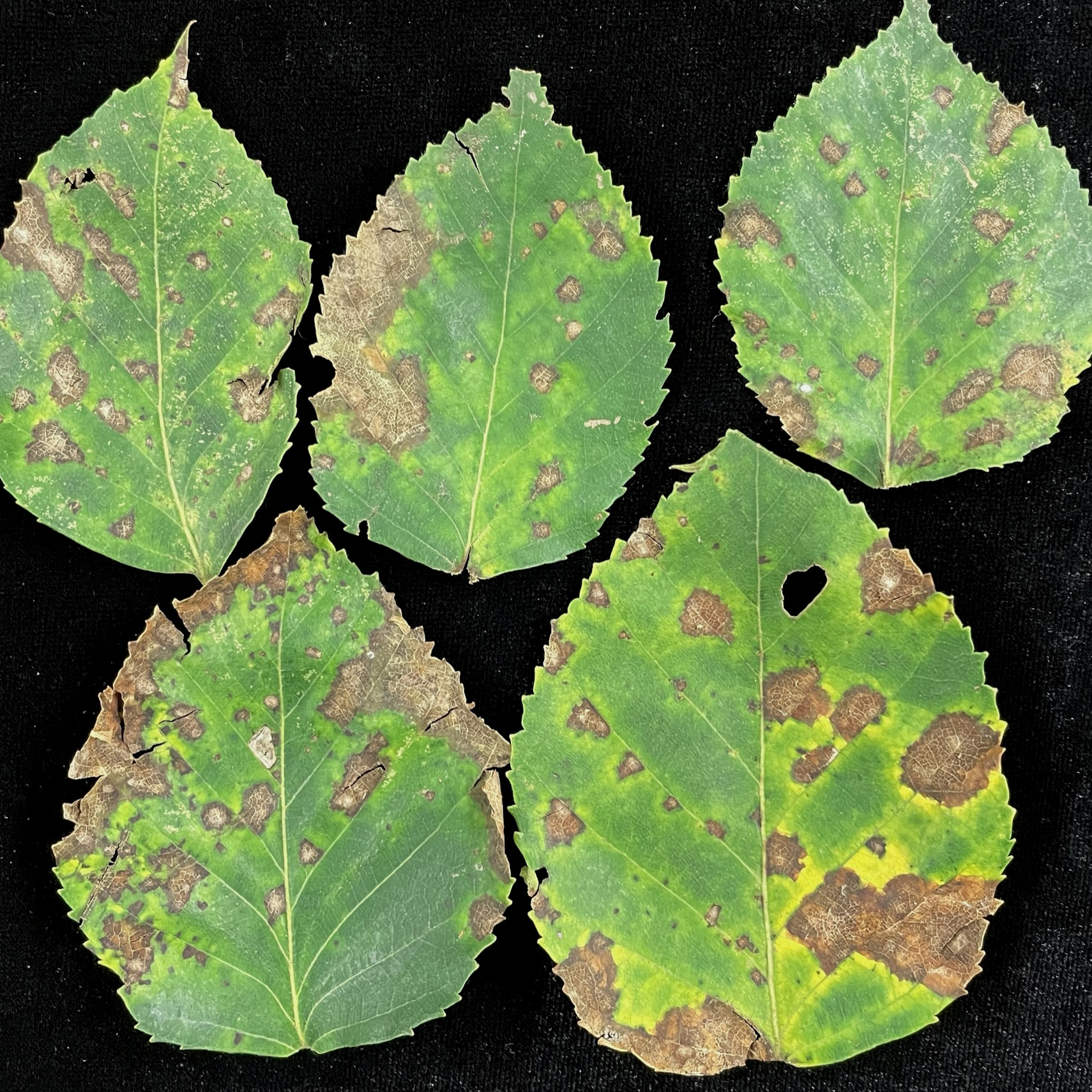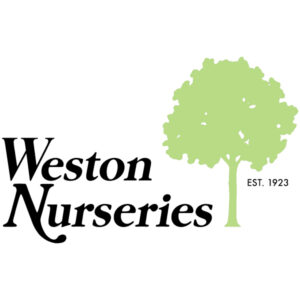Four species of Ophiognomonia (O. alni-viridis, O. hiawathae, O. intermedia and O. michiganensis), Cryptocline betularum, Marssonina betulae, and Colletotrichum are known to occur on birch (Betula) in the United States (Sinclair and Lyon 2005, Walker et al. 2012).
Based on samples submitted to the UMass Plant Diagnostic Lab, river birch (B. nigra), paper birch (B. papyrifera), gray birch (B. populifolia), and European white birch (B. pendula) are the most common hosts of birch anthracnose in managed landscapes. Black birch (B. lenta) and yellow birch (B. alleghaniensis) are common hosts of birch anthracnose, but are less abundant as ornamentals in southern New England.
Birch anthracnose is not considered a serious disease, but can be damaging in certain years. Symptoms typically appear as dark-colored, circular leaf spots that coalesce over time to create large necrotic blotches. When environmental conditions for the disease are ideal, significant portions of the canopy can be defoliated in late spring and early summer. Because several species across four fungal genera (Colletotrichum, Cryptocline, Marssonina and Ophiognomonia) are are responsible for the disease, symptoms can vary depending on the specific host-pathogen combination.
Infections are mostly restricted to the foliage on landscape ornamentals. Ophiognomonia, Marssonina and Cryptocline are not known to cause twig lesions, but species of Colletotrichum can infect woody tissues. By mid-summer, when conditions are warmer and drier, many anthracnose fungi are dormant, but can reemerge during the autumn season when conditions become cooler and wetter. Birch species exhibit indeterminate growth rates and can produce new shoots and foliage as long as environmental conditions are conducive. Many otherwise healthy trees often have the reserves to flush new growth following an anthracnose outbreak and may be largely unaffected. However, anthracnose infections early in the growing season combined with mid-summer drought stress can result in significant premature leaf shedding.
Anthracnose fungi can be challenging to control because outbreaks are difficult to predict. The disease is most severe when mild and persistently wet weather coincides with new leaf development in the spring. Outbreaks are often locally abundant but scattered across the landscape. Because anthracnose fungi overwinter on discarded leaves from the previous season, thoroughly collect and destroy all fallen leaves to reduce inoculum at the site. Pruning to increase light penetration in the canopy and improve air flow can also reduce disease severity.
Chemical management is not usually warranted, but foliar sprays can sometimes be effective when performed early in the season just before bud break and on regular intervals when new leaves are developing. Fungicides labeled for use against anthracnose include: azoxystrobin, copper salts of fatty and rosin acids, copper hydroxide, copper sulfate, mancozeb, metconazole and thiophanate-methyl + mancozeb. In general, anthracnose fungi don’t present a major threat to established, healthy trees. However, in conjunction with other stresses, it can play an important role in tree death.
Source: Center for Agriculture, Food, and the Environment, UMass Extension Landscape, Nursery and Urban Forestry Program








